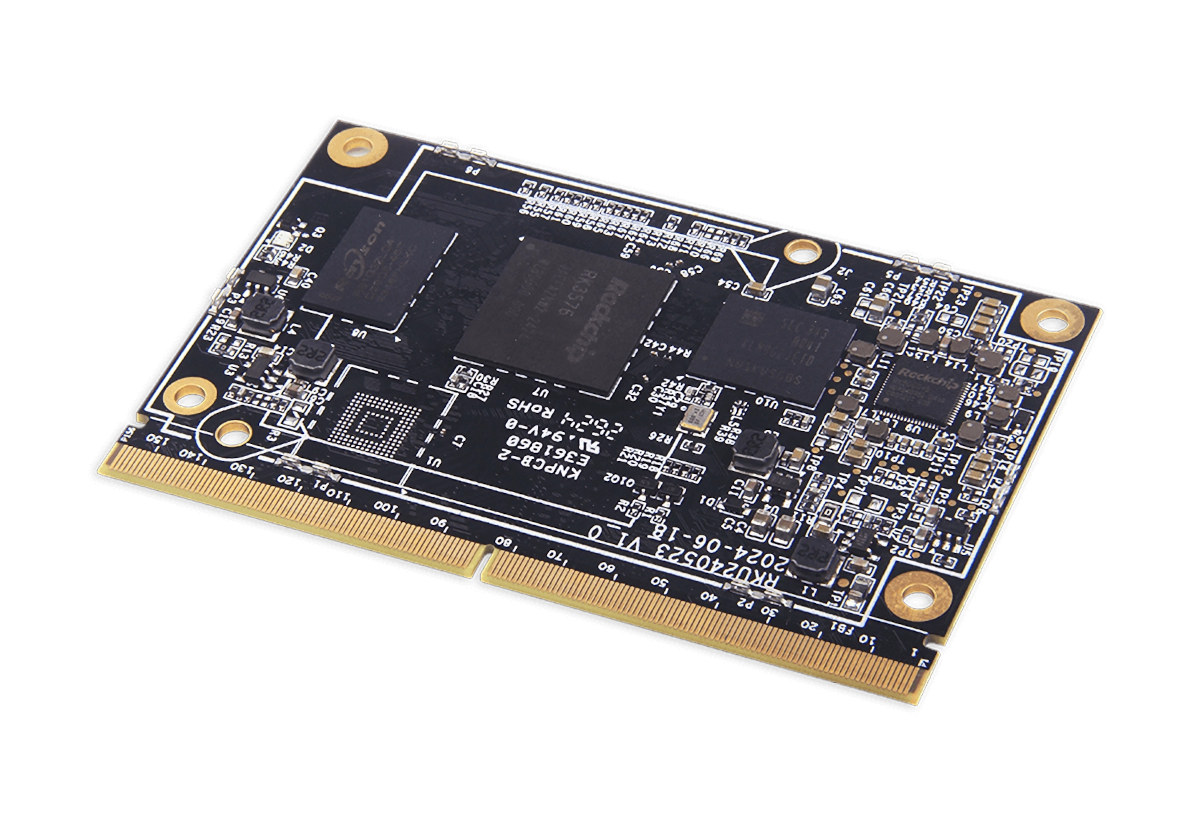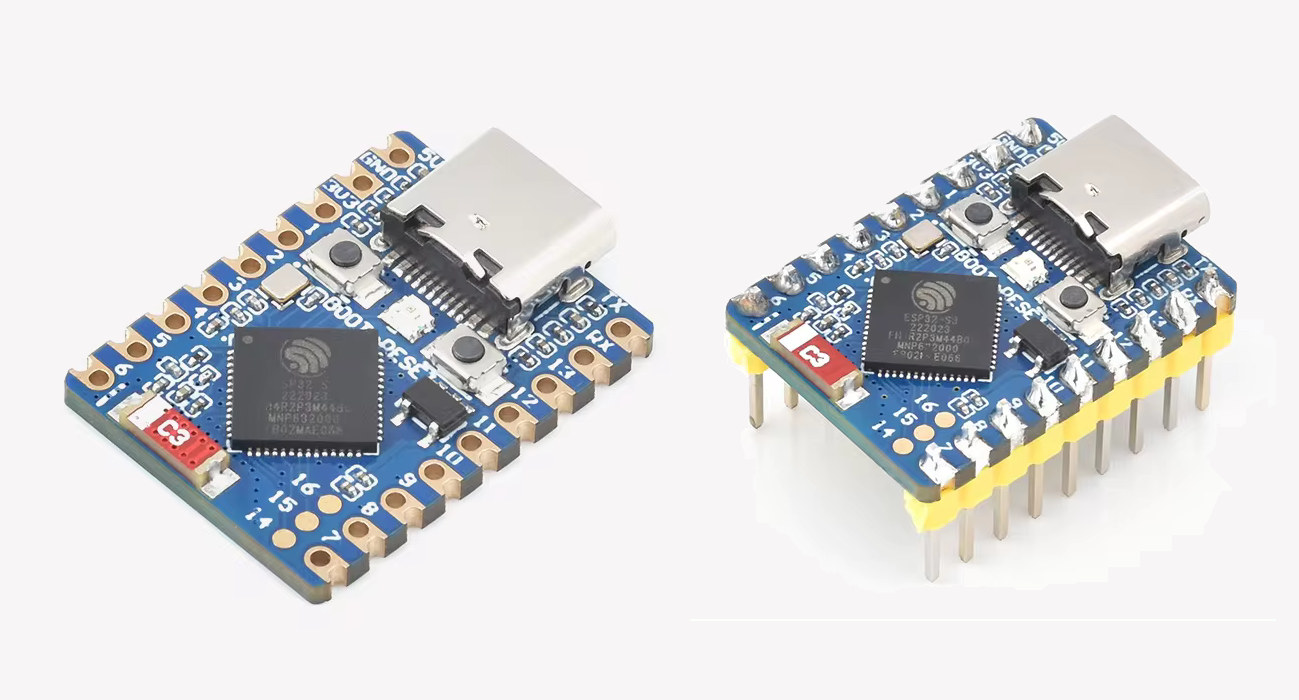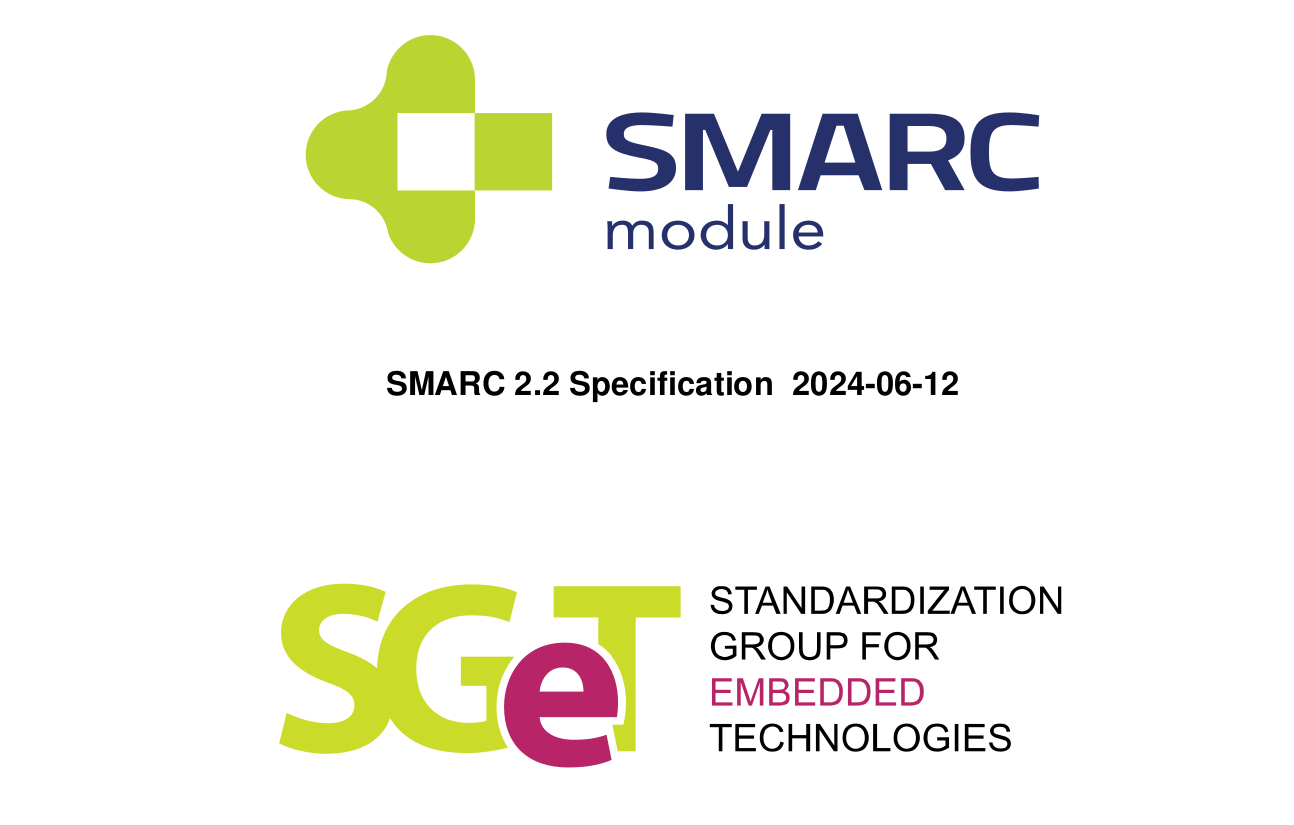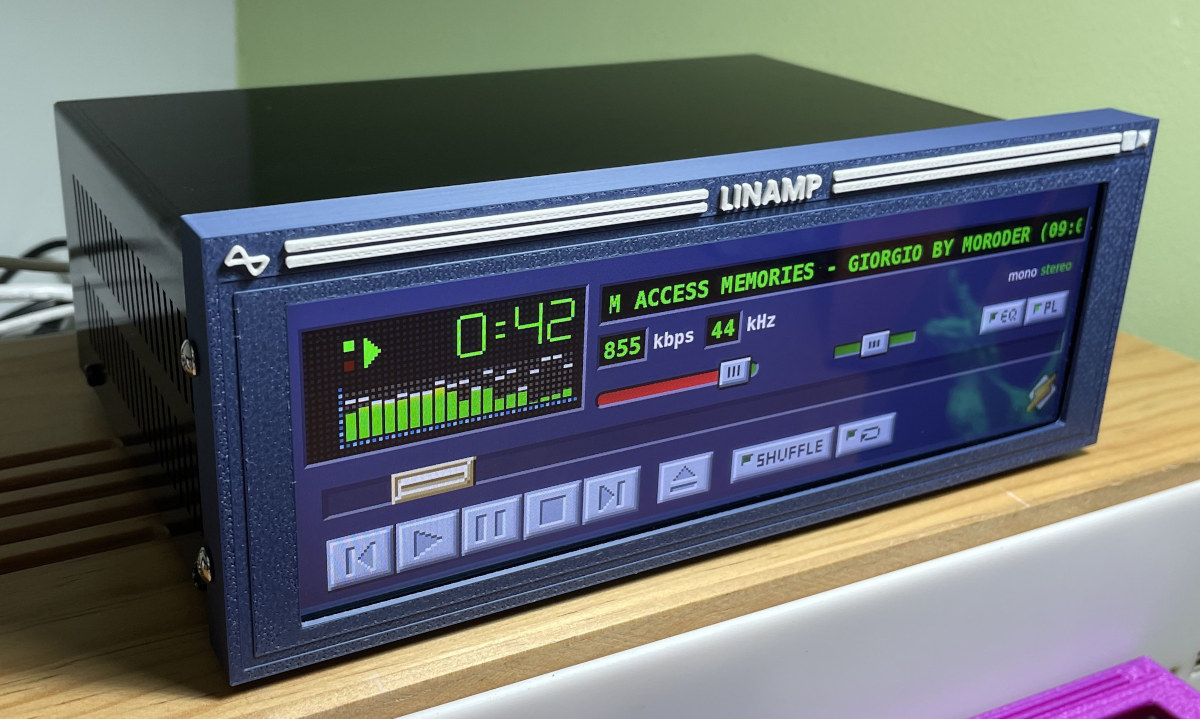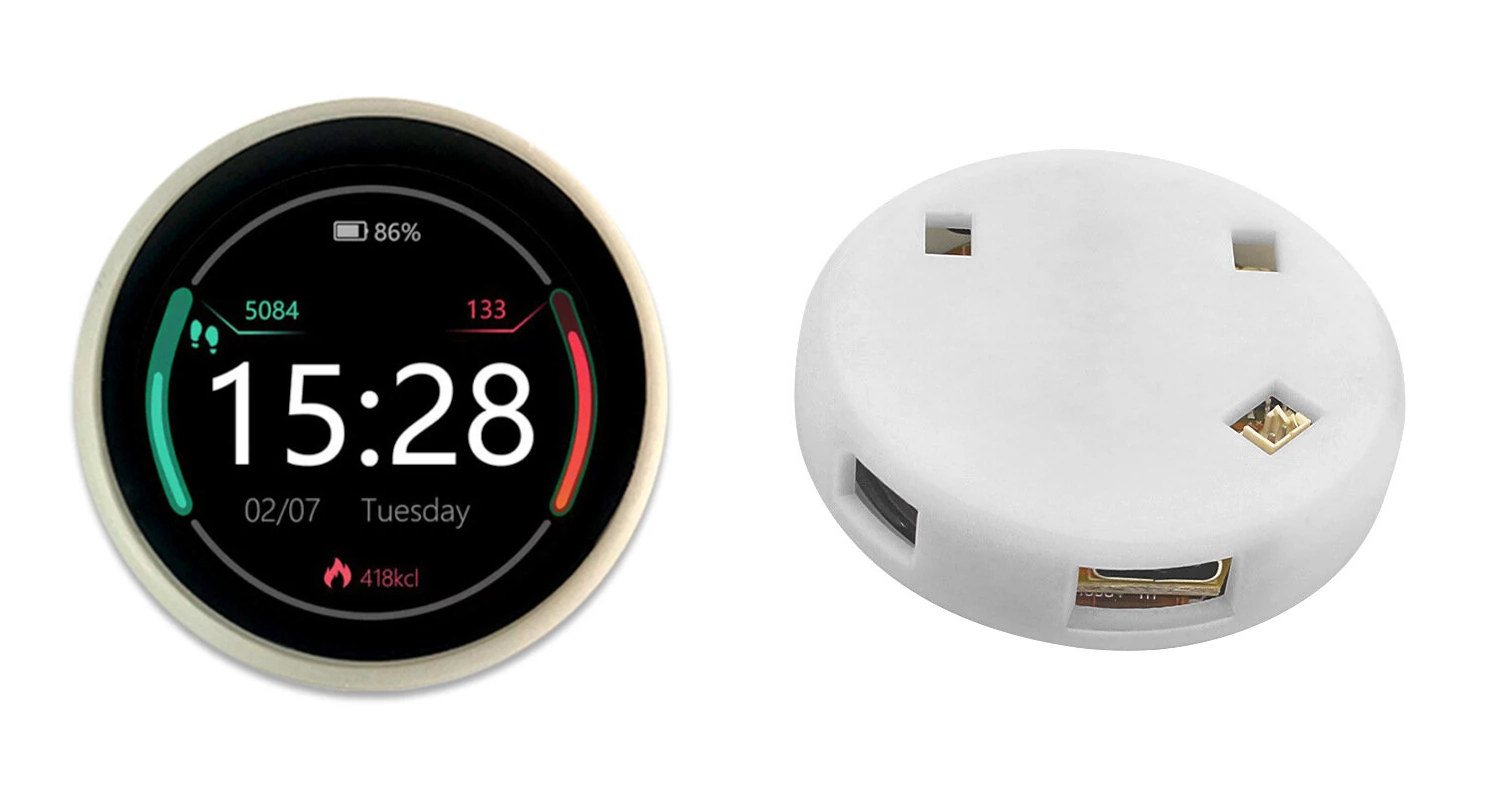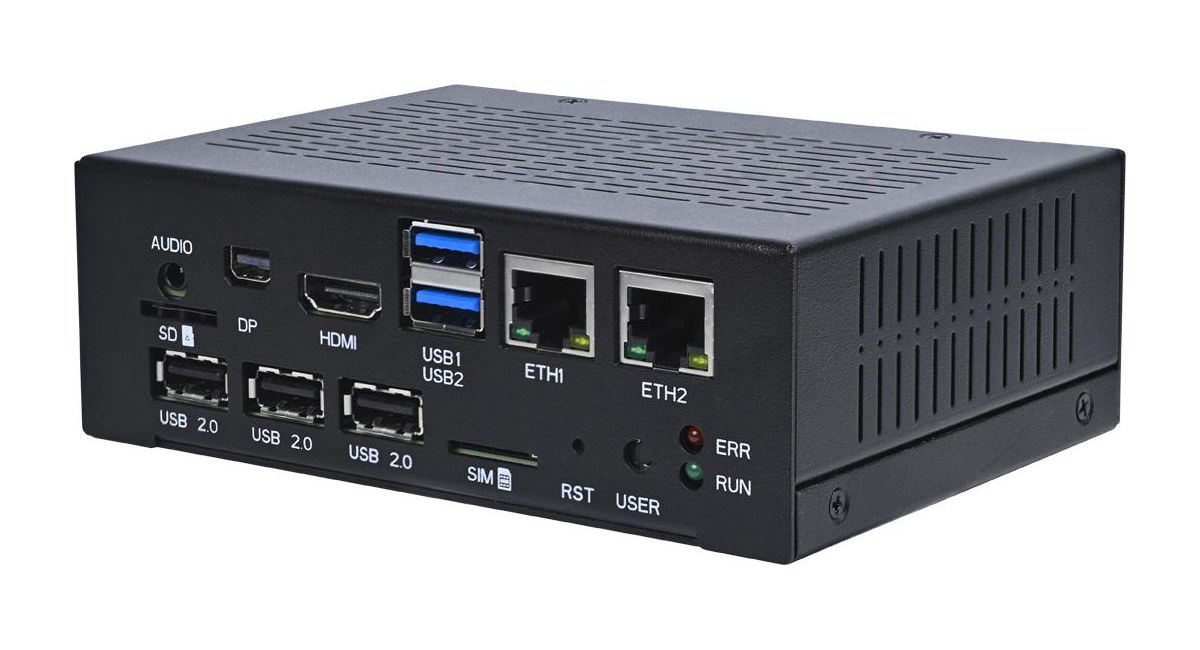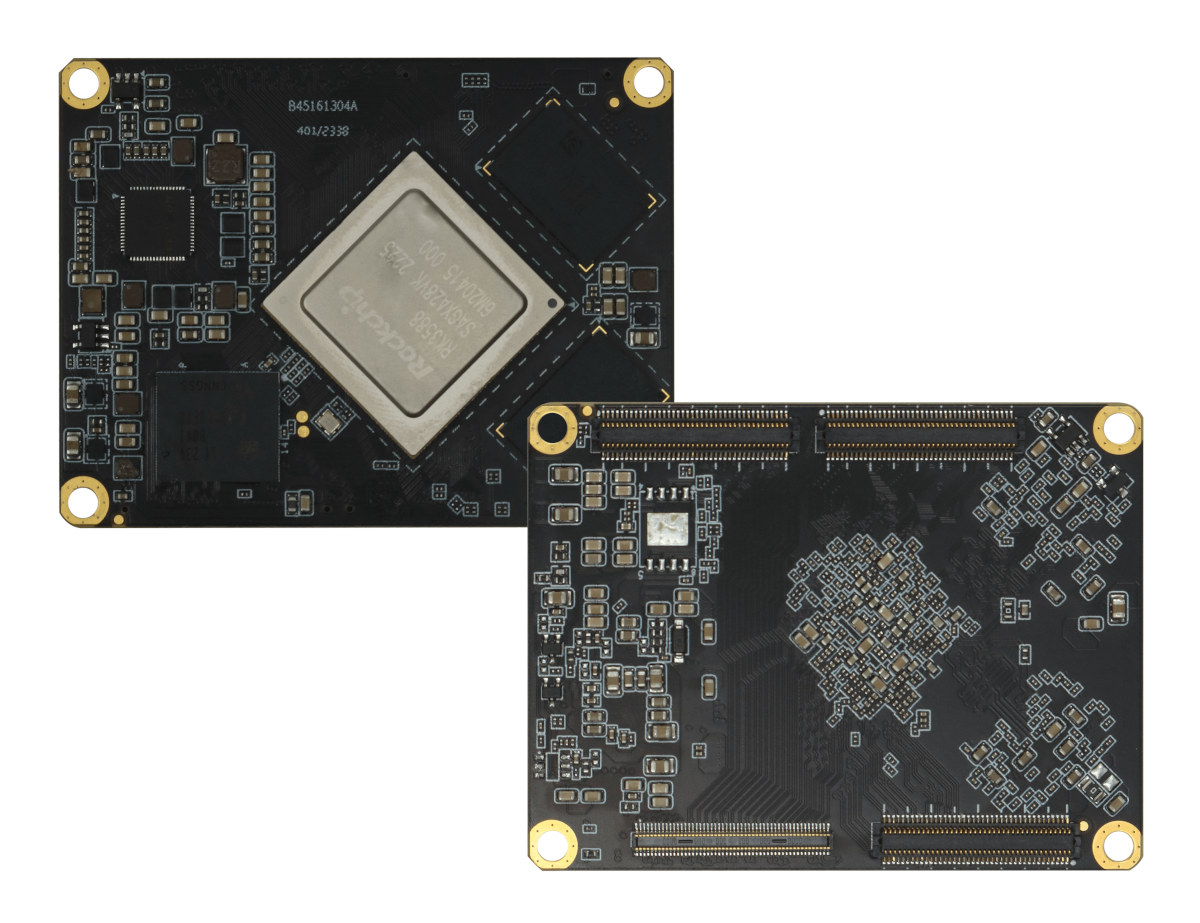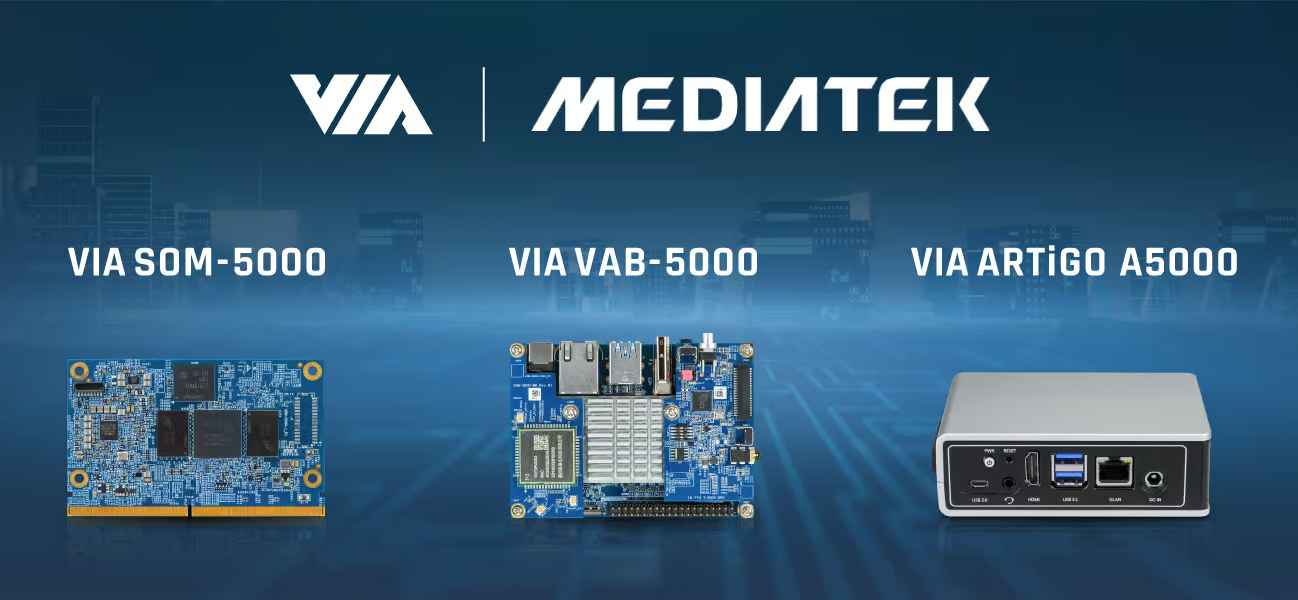Geniatech SOM-3576 is another system-on-module (SoM) powered by Rockchip RK3576 octa-core Cortex-A72/A53 AI SoC but with a 314-pin MXM 3.0 edge connector to expose I/Os. It follows other RK3576 SoMs like the Boardcon CM3576 with castellated edges and the Forlinx FET3576-C with board-to-board connectors. The SOM-3576 module supports up to 16GB RAM, and 256GB eMMC flash, and comes with a Rockchip PMIC. I can also see a footprint for 512GB or 1TB UFS storage as Firefly did on the Firefly ROC-RK3576-PC single board computer. Geniatech SOM-3576 specifications: SoC – Rockchip RK3576 CPU 4x Cortex-A72 cores at 2.3 GHz, 4x Cortex-A53 cores at 2.2 GHz Arm Cortex-M0 MCU at 400MHz GPU – ARM Mali-G52 MC3 GPU with support for OpenGL ES 1.1, 2.0, and 3.2, OpenCL up to 2.0, and Vulkan 1.1 NPU – 6 TOPS (INT8) AI accelerator with support for INT4/INT8/INT16/BF16/TF32 mixed operations. VPU Video Decoder – H.264, H.265, VP9, […]
Waveshare ESP32-S3-Zero is a tiny WiFi and BLE IoT module with a USB-C port, up to 32 GPIOs
Waveshare ESP32-S3-Zero is a tiny (23.5×18 mm) module based on Espressif ESP32-S3 WiFi 4 and BLE microcontroller with two rows of nine through holes plus 16 pads for GPIOs, a USB-C port for power and programming, Boot and Reset buttons, and a ceramic antenna. It reminds me of the Seeed Studio’s XIAO ESP32S3 module with an even smaller 21 x 17.5mm design, but the ESP32-S3-Zero offers more GPIOs, an RGB LED, and a built-in ceramic antenna instead of a u.FL connector for an external antenna. Waveshare ESP32-S3-Zero specifications: Wireless MCU – Espressif Systems ESP32-FH4R2 CPU – dual-core Tensilica LX7 microcontroller @ 240 MHz Memory – 512KB SRAM, 2MB PSRAM Storage – 4MB flash Wireless – Wi-Fi 4 & Bluetooth 5.0 dual-mode (classic + BLE) connectivity Antenna – 2.4 GHz ceramic antenna USB – USB Type-C port for power and programming Expansion I/Os 2x 9-pin 2.54mm pitch headers and castellated holes […]
SMARC 2.2 specification adds support for Soundwire, PCIe Gen4, and more
SGET (Standardization Groups for Embedded Technologies) has announced the release of the SMARC 2.2 specification with various improvements including support for Soundwire, PCIe Gen4, and severa; other changes related to pinout definitions and signal descriptions, as well as various bug fixes and corrections. SMARC (“Smart Mobility ARChitecture”) is one of the many standards for systems-on-module designed to enable interoperability between vendors that offer modules compliant with the standard. SMARC features a 314-pin MXM 3.0 connector and is available in two form factors, either 82×50 mm or 82×80 mm, with the former being more common. SMARC 2.2 changes since SMARC 2.1 (April 2020): Removed wrong AC coupling comment in section 3.5.1 HDMI (SMARC 2.1.1 update) Added Soundwire as an alternative function for I2S2 Added SERDES reset signal as an alternative function of PCIe reset signal Added SERDES interrupt signals as dual-function on GPIO[7:8] Updated supported Ethernet speed and renamed the LINK […]
Linamp – A Raspberry Pi 4-based audio box with Winamp look and feel
Linamp is a media player box based on Raspberry Pi 4 SBC and a touchscreen display with a GUI that replicates the popular Winamp media player’s GUI that older readers may remember from the late 90s and early 2000s when it was one of the most popular music players for Windows. Rodmg found some renders of what a real Winamp player could look like online, and it inspired him to create his own. As its name implies Linamp runs on Linux (DietPi) instead of Windows, and the hardware is based on a Raspberry Pi 4, a 7.9-inch touchscreen display, a USB DAC, and various connectors and cables, all housed in a custom-designed metal enclosure and a 3D-printed front cover both designed with Onshape. Here’s the complete list of off-the-shelf items used for the build: SBC – Raspberry Pi 4 with a 32 GB microSD card, a set of passive heat […]
Arduino and LVGL-compatible ESP32-C3 board features a 1.28-inch round touchscreen display fully housed in a case
The ESP32-2424S012 is an ESP32-C3 WiFi and BLE development board with a 1.28-inch round touchscreen color display that is fully housed in a black or white plastic enclosure and suitable for Arduino and LVGL library. As we’ll see further below some have also used it with Tasmota and ESPHome firmware. We previously covered several tiny ESP32-S3/ESP32-C3 boards with a round display such as the LILYGO T-RGB ESP32-S3 board, Makerfabs “ESP32-S3 Round SPI TFT with Touch 1.28″, SB Components’ Dual Roundy, but they either don’t come with a case at all, or only the front is covered, but the bottom is laid bare. The ESP32-2424S012 is quite similar, but it can be purchased with a case that covers both the front and back with some openings for expansion connectors. ESP32-2424S012 board specifications: Wireless module – Espressif Systems ESP32-C3-MINI-1U module SoC – ESP32-C3 RISC-V microcontroller @ 160 MHz with 400 KB SRAM, 2.4 […]
Rockchip RK3568 fanless industrial PC offers Ethernet, 4G LTE, WiFi, BLE connectivity, RS485, RS232, and CAN Bus interfaces
MYiR MYD-LR3568-GK-B is a fanless industrial PC Box powered by Rockchip RK3568 quad-core Cortex-A55 Ai SoC with up to 4GB RAM, 32GB GB eMMC flash, support for M.2 NVMe storage, and communication interfaces such as RS232, RS485, and CAN Bus. The device also offers dual gigabit Ethernet and optional WiFI, BLE, and 4G LTE connectivity, two video outputs, and five USB ports with a set of features and capabilities that makes it suitable for edge AI, video analytics, industrial control, protocol conversion, communication management, and more. MYiR MYD-LR3568-GK-B specifications: SoC – Rockchip RK3568J CPU – Quad-core Cortex-A55 processor at up to 1.4 GHz (An “overdrive” version at 1.8 GHz is available upon request) GPU – Mali G52 2EE GPU with support for OpenGL ES 1.1/2.0/3.2, OpenCL 2.0, Vulkan 1.1 VPU 4Kp60 H.264, H.265, VP9, 1080p60 MPEG-4/-2/-1, VP8, and VC1 video decoder 1080p60 H.264/H.265 video encoder AI accelerator – Up to […]
Dusun DSOM-042R is a Rockchip RK3588M system-on-module for “automotive AIoT” applications
Dusun DSOM-042R is a system-on-module based on Rockchip RK3588M automotive-grade AI SoC with 8GB RAM and 128GB eMMC flash, capable of operating in the -40°C to 85°C temperature range, and fitted with four high-density connected exposes the many interfaces from the octa-core Cortex-A76/A55 processor. We first found out about the RK3588M SoC last year with the Firefly AIO-3588MQ board also comprised of a system-on-module and carrier board with support for up to sixteen cameras and up to six Full HD displays to drive the car dashboard, in-vehicle infotainment, a digital rearview mirror, headrest monitors, ADAS system, and more. We hadn’t noticed other manufacturers launch a product with the automotive-grade RK3588M, and the DusunIoT DSOM-042R offers another option. Dusun RK3588M SoM specifications: SoC – Rockchip RK3588M octa-core processor with CPU – 4x Cortex-A76 cores @ up to 2.1 GHz, 4x Cortex-A55 cores @ up to 1.7 GHz (frequencies TBC) GPU – […]
VIA launches MediaTek Genio 700 SMARC SoM, Pico-ITX SBC, and fanless Edge AI embedded system
VIA Technologies has launched three new Edge AI solutions based on the MediaTek Genio 700 mid-range Cortex-A78/A55 AI SoC with the SOM-5000 SMARC 2.1.1 system-on-module, VAB-5000 single board computer (SBC), and ARTiGO A5000 fanless embedded system. All three platforms come with 4GB or 8GB LPDDR4 memory, 16GB eMMC flash, gigabit Ethernet, video interfaces, and camera inputs, and are designed for intelligent edge computing across a range of industrial, commercial, and consumer applications. VIA SOM-5000 system-on-module Specifications: SoC – MediaTek Genio 700 (MT8390) CPU – Octa-core processor with 2x Cortex-A78 cores @ up to 2.2 GHz, 6x Cortex-A55 cores @ up to 2.0 GHz GPU – Arm Mali-G57 MC3 GPU with support for OpenGL ES 1.1/2.0/3.2, OpenCL ES 2.2, and Vulkan 1.0/1.1 APIs VPU Encoding up to 4Kp30 with H.265/HEVC or H.264 Decoding up to 4Kp75, AV1, VP9, HEVC, H.264 codecs supported AI accelerator – Mediatek DLA + VP6 with INT8, […]


